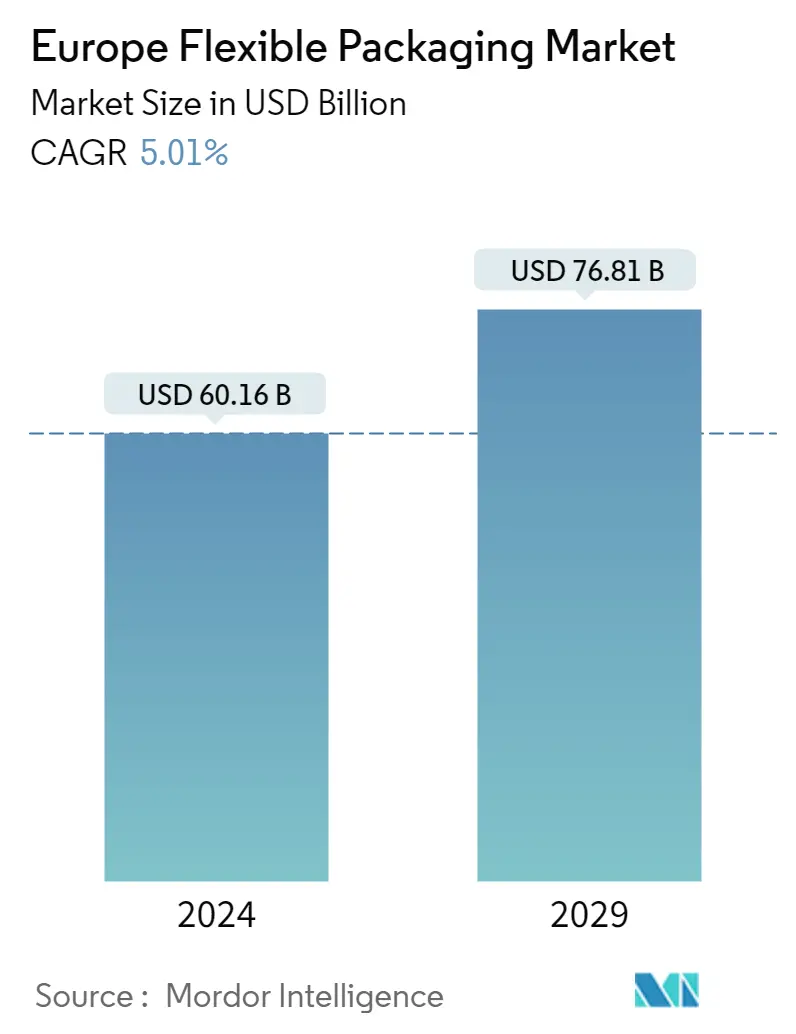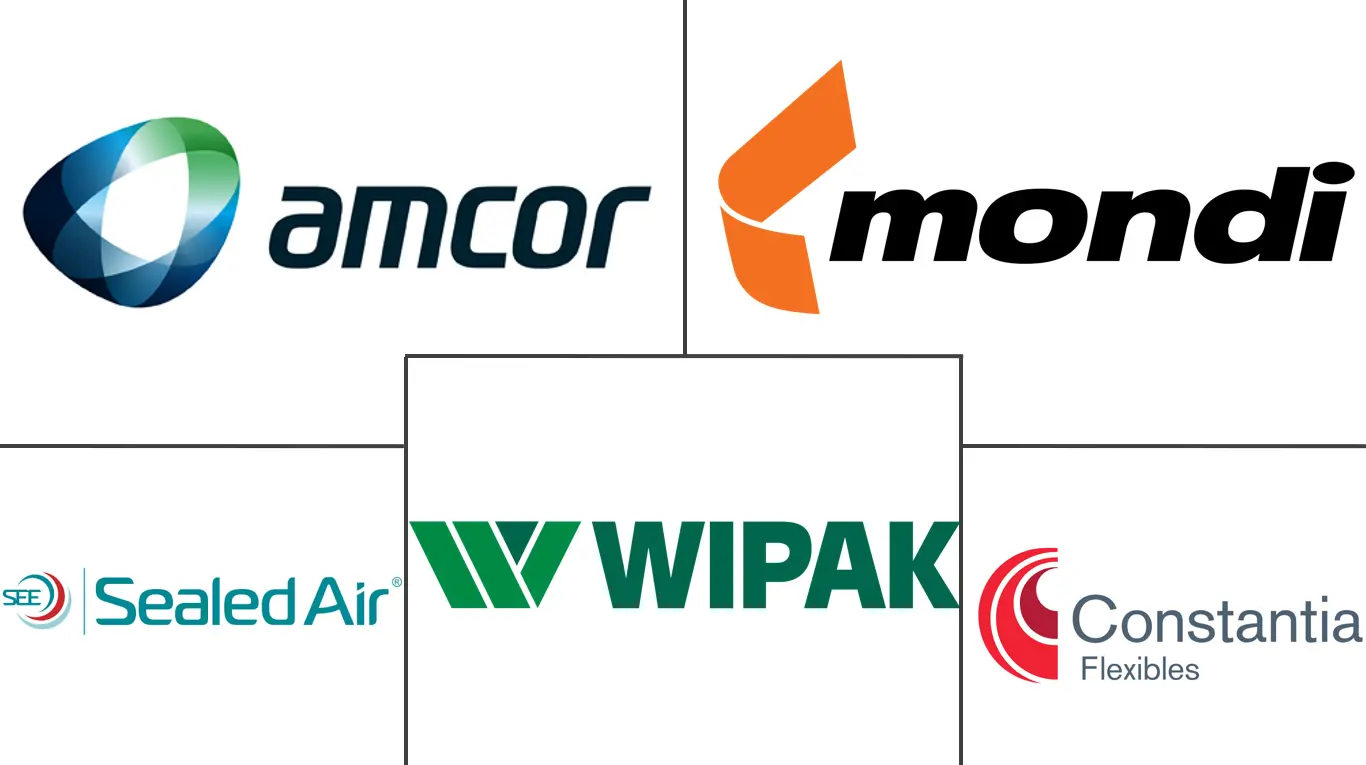Market Size of Europe Flexible Packaging Industry

| Study Period | 2019 - 2029 |
| Base Year For Estimation | 2023 |
| Market Size (2024) | USD 60.16 Billion |
| Market Size (2029) | USD 76.81 Billion |
| CAGR (2024 - 2029) | 5.01 % |
| Market Concentration | Medium |
Major Players
*Disclaimer: Major Players sorted in no particular order |
Need a report that reflects how COVID-19 has impacted this market and its growth?
Europe Flexible Packaging Market Analysis
The Europe Flexible Packaging Market size is estimated at USD 60.16 billion in 2024, and is expected to reach USD 76.81 billion by 2029, growing at a CAGR of 5.01% during the forecast period (2024-2029).
- Growing demand for processed, conveniently packaged, and pre-prepared foods and snacks in Europe will expand the market. This trend is also fueled by the continent's expanding urban population and shifting lifestyle habits, such as less time spent on meal preparation. Furthermore, because flexible packaging solutions can extend the shelf life of such products, the demand for packaged foods, ready-to-eat meals, frozen foods, and luxury foods is anticipated to rise in the nation. The emergence of sustainable, flexible packaging solutions has also been aided by rising consumer desire for product personalization and rising demand from food and beverage industries for recyclable and eco-friendly packaging.
- Owing to the region's fast-changing lifestyles and economic expansion, the preference for processed and packaged goods has driven the market for food packaging. The primary cause of the rising appetite for processed foods is the population's movement from rural to urban locations. However, the amount of plastic packaging waste in the area is rising (by 2% annually). The EU Commission is considering outlawing all plastic packaging, which is predicted to slow market expansion. According to Virginijus Sinkevicius, the incoming EU commissioner for the environment, plastic packaging and the use of recovered plastic would be outlawed.
- The dairy industry is one of many that uses plastic and concentrates on using less plastic. Lord Rooker, the United Kingdom's Food and Farming Minister, has urged the dairy industry to become more sustainable, with a 50% reduction in the number of plastics used in milk packaging. That suggests that greener packaging will continue to expand in a nation that has already demonstrated innovation diversity.
- The expanding cosmetics sector backs the market in France. For their cosmetic items, several well-known brands are choosing flexible packaging materials. Flexible solutions are more affordable and have a longer shelf life than stiff plastic. Consequently, the expanding cosmetics industry is anticipated to open up the lucrative potential for the flexible packaging market.
- The European market may face difficulties due to the financial crisis's effects on consumer spending power, rising commodity prices, and other similar concerns. Modern infrastructure is required for the process of recycling plastic packaging waste. It is a time-consuming operation that demands personnel competence. Additionally, due to the widespread usage of plastic material for flexible packaging, specific environmental issues regarding recyclability and sustainability may marginally restrict the market growth. Recycling and disposal rules are becoming stricter in a number of European nations, which could provide a problem for some merchants there. All of these things limit the expansion of the European flexible packaging market.
- Additionally, the market is anticipated to resume its expansion after the COVID-19 pandemic. Consumers are changing their tastes nowadays because they are expected to be price-conscious, lean towards value and price brands, engage, sustain, speed up online purchasing, and emphasize health and hygiene more. After the pandemic, the value chain is also digitally transformed, which lowers manufacturing and supply-chain risk. Customers can track their supply chain more closely on a weekly basis with digitization, real-time analytics, and reporting than with quarterly and annual reports. As a result, many businesses are planning their strategy and adjusting to the change brought on by the COVID-19 pandemic.
